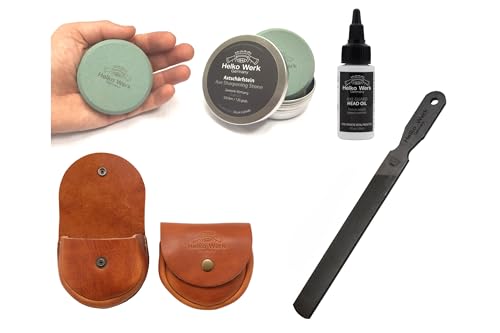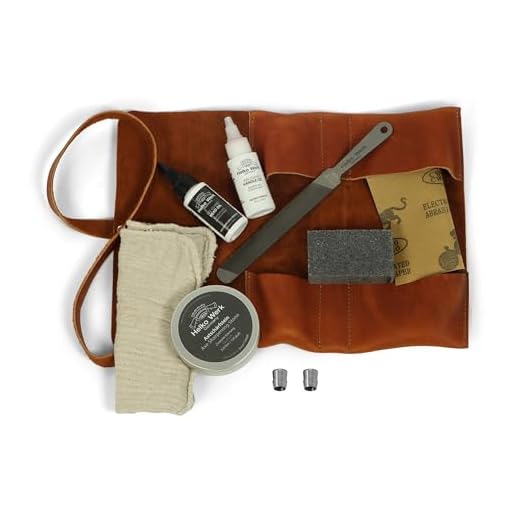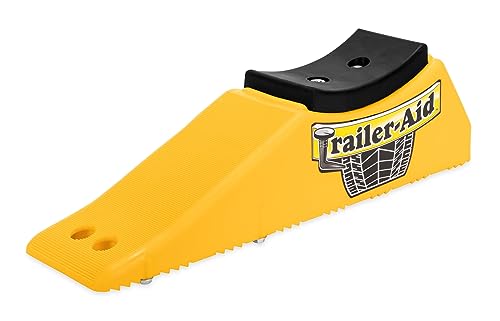




Sharpening an axe is an essential skill for any woodworker or outdoors enthusiast. A sharp axe not only makes cutting tasks easier and more efficient, but it also helps to prevent accidents and ensures a clean cut. One effective method for sharpening an axe is by using a water stone. Water stones, also known as whetstones, are natural or synthetic stones that are capable of sharpening and polishing metal tools. They have been used for centuries and are still widely regarded as one of the best ways to sharpen an axe.
To sharpen an axe with a water stone, you will need a few basic tools and materials. Firstly, you will need a water stone. It is recommended to use a medium-grit stone as it is versatile and suitable for most axes. Additionally, you will need a bucket or container of water to soak the stone in before using it. This is because water stones require water to remove the debris and prevent the blade from overheating during the sharpening process. Finally, you will need a honing guide or angle guide to maintain the correct angle while sharpening.
Begin by soaking the water stone in water for about 10-15 minutes to ensure it is fully saturated. This will enable the stone to effectively sharpen the axe. Once the stone is ready, secure the axe in the honing guide or angle guide. This will help you maintain a consistent angle throughout the sharpening process, which is crucial for achieving a sharp edge.
Hold the axe firmly and place the blade against the water stone at the desired angle. Using moderate pressure, move the axe back and forth in a smooth and controlled motion along the length of the stone. It is important to maintain the same angle throughout this process. Repeat this motion 5-10 times on each side of the axe blade, depending on the bluntness of the axe.
After sharpening both sides of the axe blade, remove the burr that forms on the edge of the blade by gently running the axe’s backside against the water stone a few times. This helps to refine the edge and ensures a clean cut. Make sure to periodically check the sharpness of the blade by lightly running your fingers along the edge. If it feels sharp and smooth, you have successfully sharpened your axe using a water stone.
Why sharpening an axe is important
Sharpening an axe is an essential task that should not be overlooked. Regularly sharpening your axe blade can have several benefits, including:
|
1. Improved cutting performance: Must-Have
Black Ceramic Water Sharpener Tool Two-stage sharpening for optimal blade care
This convenient ceramic water sharpener features two distinct sharpening stages and an innovative design that allows for water use. It ensures precise and even sharpening of your blades every time.
Sharp axes cut more efficiently, reducing the effort required to chop wood. With a sharp blade, you will be able to make cleaner and more precise cuts, resulting in a more effective and productive work. |
|
2. Safety: A dull axe can be dangerous to use. If the blade is not sharp, it can bounce off the wood and cause accidents. By keeping your axe properly sharpened, you can minimize the risk of accidents and work with greater control and confidence. |
|
3. Prolonged axe life: An axe with a blunt and damaged blade will wear out faster and require more frequent replacements. By honing and maintaining a sharp edge, you can extend the lifespan of your axe, saving you money in the long run. |
|
4. Versatility: Sharpening your axe allows you to use it for a variety of tasks. Whether you need to chop wood, clear brush, or perform other outdoor activities, a sharp axe will provide you with the versatility you need. |
Overall, sharpening an axe is a simple yet crucial maintenance task that ensures optimal performance, safety, and longevity of your tool. By taking the time to sharpen your axe regularly, you can enjoy all the benefits it offers and get the most out of your axe.
Understanding the water stone
The water stone is an essential tool for sharpening axes efficiently and effectively. It is a special type of sharpening stone that requires water to be used while sharpening. The water acts as a lubricant and helps to remove metal particles from the surface of the stone, ensuring a clean and precise sharpening process.
Types of water stones
There are different types of water stones available, each with its own unique characteristics. The most common types include:
- Natural water stones: These stones are usually made from sedimentary rocks and vary in terms of hardness and texture. Natural water stones are known for their excellent sharpening qualities but can be expensive and require regular maintenance.
- Synthetic water stones: These stones are made from synthetic materials and are generally more affordable and consistent in quality. It is important to note that synthetic water stones can vary in terms of grit levels, which determines the coarseness of the stone.
Choosing the right water stone
When selecting a water stone for sharpening your axe, consider the following factors:
- Grit level: The grit level refers to the coarseness or fineness of the stone. A lower grit level (e.g., 200 to 400) is ideal for repairing damaged or dull edges, while a higher grit level (e.g., 1000 to 6000) is suitable for fine sharpening and polishing.
- Size and shape: Water stones come in various sizes and shapes, including rectangular, square, and round. Choose a size and shape that is convenient for your sharpening needs.
- Soaking time: Some water stones require soaking in water before use, while others only need a quick splash. Make sure to follow the manufacturer’s instructions regarding soaking time to achieve the best results.
Note: It is recommended to use a separate water stone for axe sharpening to avoid cross-contamination with other tools.
By understanding the different types of water stones and choosing the right one for your needs, you can ensure a sharp and durable edge on your axe. Regular maintenance and proper sharpening techniques are also important to maintain the longevity of your water stone and the effectiveness of your axe.
Step-by-step guide to sharpening an axe with a water stone
Sharpening an axe is an essential task for maintaining its cutting effectiveness and prolonging its lifespan. Using a water stone is one of the most effective methods for achieving a sharp edge. Follow these steps to sharpen your axe with a water stone:
- Secure your axe: Start by securely clamping the axe head in a vise or holding it firmly against a sturdy work surface. This will ensure stability during the sharpening process and prevent any accidents.
- Prepare the water stone: Soak the water stone in water for about 10-15 minutes before using it. This will help to properly lubricate the stone and make the sharpening process smoother.
- Start with the coarse side: Begin by using the coarse side of the water stone. Hold the axe at a 15-20-degree angle to the stone and start making circular motions while applying even pressure. Continue this motion, moving the axe along the full length of the stone.
- Constantly check for burrs: As you sharpen, periodically check the edge of the axe for any burrs or imperfections. If you notice any, gently remove them by using a fine-grit sandpaper or a honing stone.
- Switch to the fine side: Once the edge of the axe is free from burrs and you are satisfied with the sharpening progress on the coarse side, flip the water stone to the fine side. Repeat the sharpening process using the same circular motions and even pressure.
- Test the sharpness: To test the sharpness of your axe, carefully run your thumb along the edge. If it feels sharp and catches on your skin, your axe is ready to use. If not, repeat the sharpening process until the desired sharpness is achieved.
- Remove any debris: After sharpening, rinse the axe head thoroughly to remove any metal shavings or debris. Dry it completely to prevent rusting.
- Apply lubrication: To protect the newly sharpened edge, apply a thin layer of lubricant or oil to the blade. This will help prevent corrosion and keep the edge in good condition.
By following these step-by-step instructions, you can effectively sharpen your axe with a water stone and ensure optimal cutting performance whenever you need it.
Gathering the necessary materials
Before you begin sharpening your axe with a water stone, it’s important to gather all the necessary materials. Here’s what you’ll need:
1. Water stone: Choose a water stone with a coarse grit, around 400 to 1000 grit. This will effectively remove any dullness or nicks from the blade.
2. Water: You’ll need water to soak the water stone before using it. Make sure you have a container nearby to hold the water.
Axe: Ensure that you have the axe you plan to sharpen. Check for any damage or chips in the blade before proceeding.
Protective gear: Sharpening an axe can be dangerous, so make sure you have the necessary protective gear. This may include safety goggles, gloves, and a sturdy workbench or vice to hold the axe securely.
Optional: While not necessary, you may also want to have a honing strop and compound on hand for the final touch-ups. These can help further refine the edge of the axe.
Preparing the axe for sharpening
Before you begin sharpening your axe with a water stone, it is important to properly prepare the axe to ensure the best results. Follow these steps to get your axe ready:
Clean the axe
Start by cleaning the axe blade thoroughly. Use a brush or a damp cloth to remove any dirt, rust, or debris from the surface of the blade. Cleaning the axe will help prevent any contaminants from interfering with the sharpening process.
Inspect the axe
Next, carefully inspect the axe for any signs of damage or issues that might affect its performance. Look for nicks, chips, or dents on the blade or the cutting edge. If you spot any damage, consider repairing or replacing the axe before proceeding with sharpening.
Note: It is important to remember that sharpening a damaged axe may not yield the desired results and can potentially worsen the condition of the blade.
By thoroughly cleaning and inspecting your axe before sharpening, you can ensure that you start the sharpening process with a blade that is in optimal condition, increasing the effectiveness of the sharpening technique.
Sharpening the axe with the water stone
To sharpen an axe effectively, using a water stone is highly recommended. Water stones, also known as wet stones, are abrasive stones that work well for sharpening various cutting tools, including axes. Follow these steps to sharpen your axe with a water stone:
1. Prepare the water stone
Begin by soaking the water stone in water for about 10 minutes. This will ensure that the stone is properly wet before you start sharpening.
2. Secure the axe
Find a stable surface or workbench where you can safely secure your axe. You can use clamps or a vise to hold the axe firmly in place. Make sure that the axe head is securely fixed and won’t move during the sharpening process.
3. Start sharpening
Hold the axe with both hands, placing one hand on the handle and the other on the axe head. Position the axe on the water stone at a slight angle, around 20-25 degrees. Apply even pressure and move the axe back and forth, always following the natural contour of the blade. Repeat this motion on both sides of the blade.
It is important to maintain a consistent angle and apply even pressure to ensure an even sharpening. Take your time and be patient as you work through the blade, checking its sharpness regularly.
4. Test the sharpness
After sharpening for some time, stop and test the sharpness of the axe. Carefully run your thumb along the edge of the blade to feel for any burrs or rough spots. If necessary, continue sharpening until you achieve the desired sharpness.
5. Clean and oil the axe
Once you are satisfied with the sharpness of the axe, clean off any metal shavings from the blade. Use a rag or towel to wipe away the debris. Then, apply a thin layer of oil to protect the blade from rust and corrosion. This will help maintain the sharpness of the axe and prolong its lifespan.
Remember, sharpening an axe requires practice and patience. With time, you will become more comfortable and confident in sharpening your axe effectively using a water stone.
Testing the sharpness of the axe
Once you have finished sharpening your axe with a water stone, it’s important to test its sharpness before using it. Here are a few steps you can follow:
- Visual inspection: Carefully examine the edge of the axe blade. Look for any burrs or rough areas, which may indicate that the blade needs further sharpening.
- Paper test: Find a piece of paper and hold it firmly in one hand. With the other hand, try to make a clean cut through the paper using the axe blade. If the blade easily slices through the paper without tearing or snagging, it is sharp enough.
- Wood test: Take a small piece of softwood, such as pine or cedar, and place it securely on a stable surface. With a controlled motion, try to chop into the wood using the axe. If the blade sinks into the wood easily and cleanly, it is sharp and ready to use.
- Shaving test: If you want to test the ultimate sharpness of your axe, you can try the shaving test. Using the axe blade, try to shave a small, thin piece of wood off a larger piece. If the blade is extremely sharp, it will effortlessly glide through the wood, leaving behind a clean and smooth surface.
Remember, safety is paramount when testing the sharpness of your axe. Always exercise caution and wear appropriate protective gear to prevent accidents or injuries.







